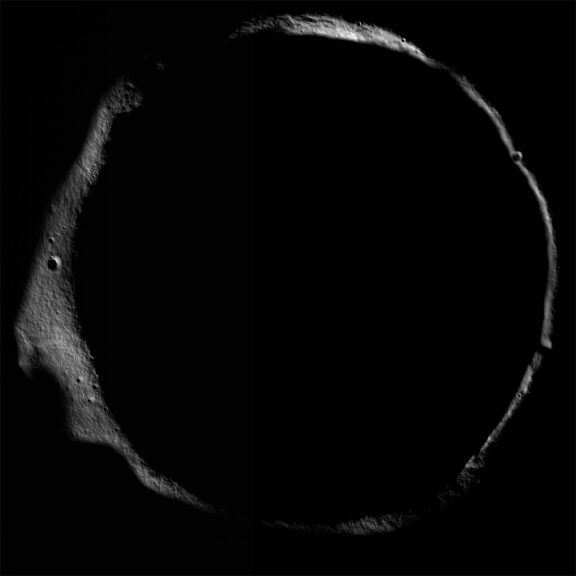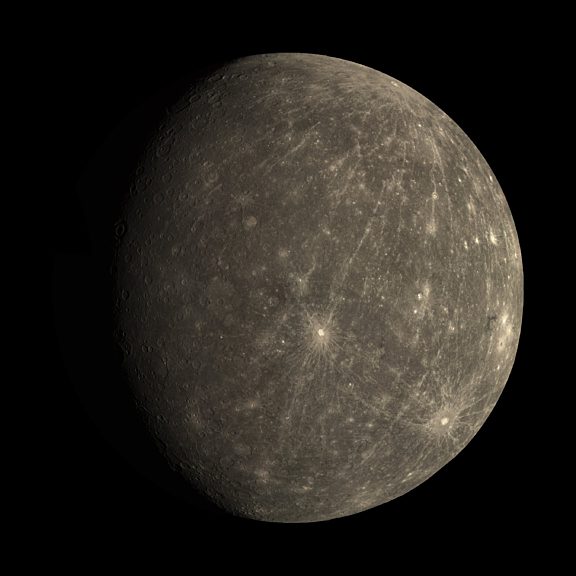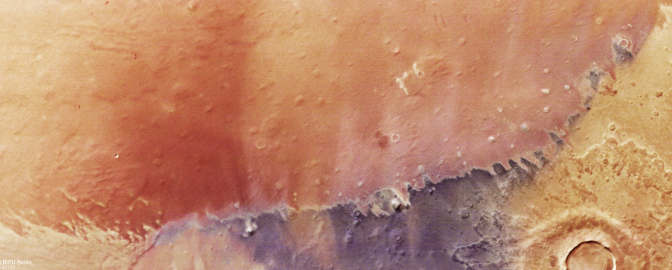The hottest and coldest places in the Solar System

Written by
Kate Howells
Public Education Specialist, The Planetary Society
April 23, 2024
We all know that space is cool, but some places in the Solar System are cooler than others — literally.
There is an extremely wide range of temperatures throughout our cosmic neighborhood, from the searing heat of the Sun to the icy outer reaches of the Oort Cloud. Here’s our list of some of the hottest and coldest places in the Solar System.
The hottest places in the Solar System
The Sun
As you might guess, the Sun holds the title of hottest place in the Solar System. Its core reaches temperatures of about 15 million degrees Celsius (27 million degrees Fahrenheit), fueling the warmth we depend on here on Earth.

One of the Sun’s biggest mysteries is that its outer atmosphere, also called the corona, is much hotter than its surface. The corona is heated to more than 1 million degrees Celsius (2 million degrees Fahrenheit), while the surface temperature remains a comparatively cool 5,800 degrees Celsius (about 10,000 degrees Fahrenheit). NASA’s Parker Solar Probe is studying the corona from within to try to understand this phenomenon.
Io
Io, one of Jupiter’s major moons, has some of the highest surface temperatures in the Solar System not because of the Sun’s heat, but because of its extreme volcanic activity. This relatively small world is the most volcanically active body in the Solar System, with roughly 400 active volcanoes dotting its surface.
These volcanoes erupt lava and gasses, sometimes reaching temperatures of more than 1,000 degrees Celsius (1,832 degrees Fahrenheit).

Io gets its heat from internal friction caused by an eccentric orbit around Jupiter. As Io gets closer to and farther from Jupiter, the gravitational ebb and flow distorts the shape of the moon. This squeezing and stretching creates friction. Inside Io, the heat caused by all this friction is enough to melt rock into magma.
Although Earth’s volcanoes also produce super-heated lava, eruptions on Earth aren’t as frequent as they are on Io. That’s why Jupiter’s volcanic little moon edges our planet out in the category of red hot lava world.
Venus
Despite not being the closest planet to the Sun, Venus has the hottest surface of any planet in the Solar System. On the surface of Venus, temperatures can reach around 460 degrees Celsius (860 degrees Fahrenheit). This is hot enough to melt lead.

These searing temperatures are caused by Venus’ thick atmosphere, which is composed mainly of carbon dioxide. As we know from its role in climate change on Earth, carbon dioxide is a greenhouse gas. When the Sun’s light heats Venus, the heat can’t efficiently radiate back into space because it’s trapped by the carbon dioxide in the atmosphere. This heats the planet up dramatically.
The coldest places in the Solar System
The Oort Cloud
As logic would suggest, the farther you go from the Sun, the colder things get. This is why the Oort Cloud, the group of icy objects extending from about 2,000 to 100,000 astronomical units (the average Sun-Earth distance, also know as AUs) from the Sun, likely hosts some of the coldest environments in our Solar System.
While we haven’t studied any of these objects up-close in their home environment, the inner Solar System does sometimes get visitors from the Oort Cloud: comets.

Although we have not yet been able to take direct temperature readings of objects in the Oort Cloud, theoretical calculations suggest that objects in the outer parts of the region could be just a few degrees above absolute zero (the coldest possible temperature).
Arrokoth
The farthest object ever visited by a spacecraft is Arrokoth, a trans-Neptunian object located in the Kuiper belt beyond Pluto. NASA’s New Horizons spacecraft flew past Arrokoth in 2019 after completing its primary mission to study Pluto. New Horizons took surface temperature measurements of both icy worlds, and found Arrokoth to be the colder of the two — as would be expected due to its greater distance from the Sun. Arrokoth is the coldest Solar System object to have its temperature measured up close.

Arrokoth’s surface temperature is estimated to be about -230 degrees Celsius (-384 degrees Fahrenheit). Arrokoth’s frigid temperature isn’t just because of its distance; it’s also made of fairly bright material, meaning it reflects a lot of the sunlight that reaches it instead of absorbing it.
The Moon
The unexpected member of this category is Earth’s Moon — the exception to the general rule of thumb of “farther from the Sun equals colder.” It isn’t the Moon’s entire surface, but certain regions that earn the Moon its place among the coldest worlds.
Deep within craters, primarily near the Moon’s poles, there are some areas on the Moon that have not received direct sunlight for potentially billions of years. These permanently shadowed regions have temperatures as low as -233 degrees Celsius (-387 degrees Fahrenheit) — colder than Pluto and even Arrokoth.

These extreme temperatures allow water ice to remain frozen instead of sublimating directly into a gas. This makes permanently shadowed regions of particular interest for future exploration of the Moon, since their water could be a valuable resource for human explorers.
Honorable mention: the hot and cold world
Mercury gets a special shout-out for being the world with the most extreme temperature swings in the Solar System. This has to do with Mercury’s proximity to the Sun, orbital and rotational speeds, and lack of substantial atmosphere.

A Mercury day (the time it takes to rotate from one noon to the next) is 176 Earth days long. It completes an orbit around the Sun in about 88 Earth days. This means that its periods of daylight and nighttime are very long, allowing surface temperatures to rise very high during the day and drop precipitously at night. The difference between the day side and night side is even more extreme than on a planet like Earth because Mercury doesn’t have a substantial atmosphere to trap and regulate heat.
Taken together, these factors cause Mercury to experience extreme differences in temperature between its day and night sides. During the day, Mercury’s surface can reach up to about 430 degrees Celsius (800 degrees Fahrenheit), and at night, temperatures can drop to as low as -180 degrees Celsius (-290 degrees Fahrenheit) — a swing of up to 610 degrees Celsius (1,090 degrees Fahrenheit).
While other worlds hold records for most extreme heat and cold, none compare to Mercury when it comes to dramatic temperature swings.
Support our core enterprises
Your gift today will go far to help us close out the year strong and keep up our momentum in 2026.
Donate

 Explore Worlds
Explore Worlds Find Life
Find Life Defend Earth
Defend Earth

